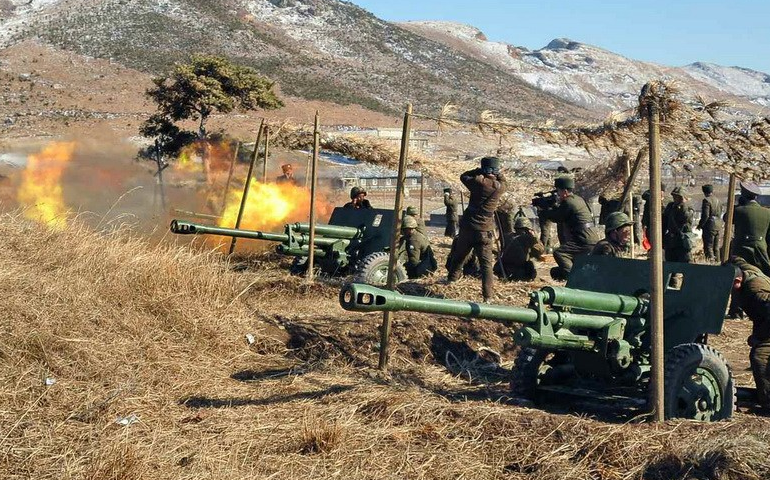Military forces of North and South Korea exchanged fire across the 4 kilometer (2.5 mile)-wide Korean Demilitarized Zone on Thursday afternoon. The incident was a North Korean provocation resulting from a recent chain of events involving a landmine explosion in the DMZ – which the South blames on the North – and the resumption of propaganda broadcasts by loudspeaker at the DMZ, first by the South and the by the North. Though the incident itself is a symptom of high tensions between the two Koreas and shows how easily military exchanges can occur, the outcome shows it is possible to effectively handle such an incident without wider conflict and that neither side desires a resumption of open warfare.
The KPA first fired one 14.5 mm round toward loudspeakers in the DMZ in South Korea’s Yeoncheon County, Gyeonggi Province, at 3:52 p.m. KST. They followed this by firing three 76.2 mm rounds at 4:12 p.m. This second volley was fired toward South Korean forces of the 28th Infantry Division and fell about 700 meters south of the Military Demarcation Line (MDL) in a mountainous area near the middle of Yeoncheon County. The Republic of Korea (South Korea) Army measured the ballistic trajectory of the rounds to determine the probable origin and returned fire with 29 shells at a location about 500 meters north of the MDL at 5:04 p.m., more than one hour after the initial firing by North Korea.
Military forces of North and South Korea exchanged fire across the 4 kilometer (2.5 mile)-wide Korean Demilitarized Zone on Thursday afternoon. The incident was a North Korean provocation resulting from a recent chain of events involving a landmine explosion in the DMZ – which the South blames on the North – and the resumption of propaganda broadcasts by loudspeaker at the DMZ, first by the South and the by the North. Though the incident itself is a symptom of high tensions between the two Koreas and shows how easily military exchanges can occur, the outcome shows it is possible to effectively handle such an incident without wider conflict and that neither side desires a resumption of open warfare.
The KPA first fired one 14.5 mm round toward loudspeakers in the DMZ in South Korea’s Yeoncheon County, Gyeonggi Province, at 3:52 p.m. KST. They followed this by firing three 76.2 mm rounds at 4:12 p.m. This second volley was fired toward South Korean forces of the 28th Infantry Division and fell about 700 meters south of the Military Demarcation Line (MDL) in a mountainous area near the middle of Yeoncheon County. The Republic of Korea (South Korea) Army measured the ballistic trajectory of the rounds to determine the probable origin and returned fire with 29 shells at a location about 500 meters north of the MDL at 5:04 p.m., more than one hour after the initial firing by North Korea.
Become a member for less
than $5.75 per week.
Unlimited access to all of NK News: reporting, investigations, analysis
The NK News Daily Update, an email newsletter to keep you in the loop
Searchable archive of all content, photo galleries, special columns
Contact NK News reporters with tips or requests for reporting
Get unlimited access to all NK News content, including original reporting, investigations, and analyses by our team of DPRK experts.
Subscribe now
All major cards accepted. No commitments – you can cancel any time.













